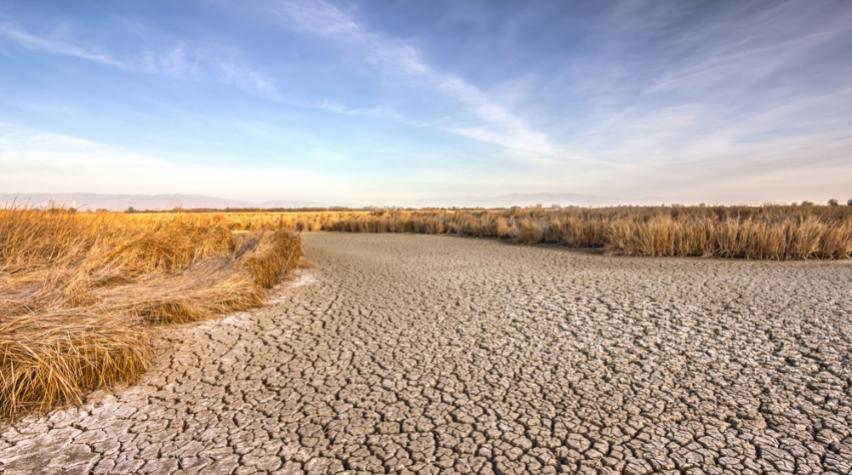
Starting in 2004, Israel lived through seven straight years of severe drought and water shortages. The Sea of Galilee, a major source of freshwater, fell dangerously low. The situation was so dire the government began running public service announcements with distraught celebrities begging viewers to stop wasting water. Quick cut to new crisis: small towns in California are beginning to run out of drinking water as a severe drought threatens to devastate that state. It's barely spring and wildfires are already burning up the dry hillsides around Los Angeles. Helpless farmers are beginning to idle as many as a half million acres of San Joaquin Valley farm and ranch land. In Sacramento, standing amid this statewide disaster, The Times of Israel reported that Israeli Prime Minister Benjamin Netanyahu and Governor Jerry Brown agreed to expedite the export of Israeli water technology to the US. "California doesn't need to have a water problem," Netanyahu told the press, speaking from personal experience. Israel's ongoing water crisis has made the drought-prone country a leader in the field of water-saving technology, with exports totaling $1.5 billion a year.
Israeli necessity, the mother of invention
Today the new reality in Israel is that even though the country is still enduring a long-term drought, it no longer has a water shortage. The Sea of Galilee is much higher. TV has stopped broadcasting panicky water PSA's, and a long-standing conservation campaign has been scrapped. This improbable transformation is the result of combining new seawater desalination plants, web-based leak detection software, waste water recycling, and modern drip irrigation into a synergistic, countrywide network.

An integrated strategy
Software water grid monitoring
Once potable, the desalinated water is then sent to the cities, where TaKaDu, an Israeli startup has lowered water grid leakage to less than 10 percent by using software that relies on statistical and mathematical algorithms to monitor and warn about leaks and pipe bursts. This compares to about 25 to 30 percent across most other city networks. A promo describes the process:
An irrigation revolution
Much of the Israel's irrigation is done using drip irrigation built by Netafim, the inventor and global leader. Globally, over 38,600 square miles are now watered by drip technologies. Drive through the San Joaquin Valley, America's drought-stricken breadbasket, and chances are you will see drip irrigation systems keeping many orchards and farms on life support. Simcha Blass, an Israeli water engineer, discovered the usefulness of drip irrigation, realizing that a slow drip led to remarkable plant growth. He tested it at Kibbutz Hatzerim, a small agricultural community located in Israel's Negev desert. In 1965, the kibbutz became Netafim's first production facility. An historical timeline:





